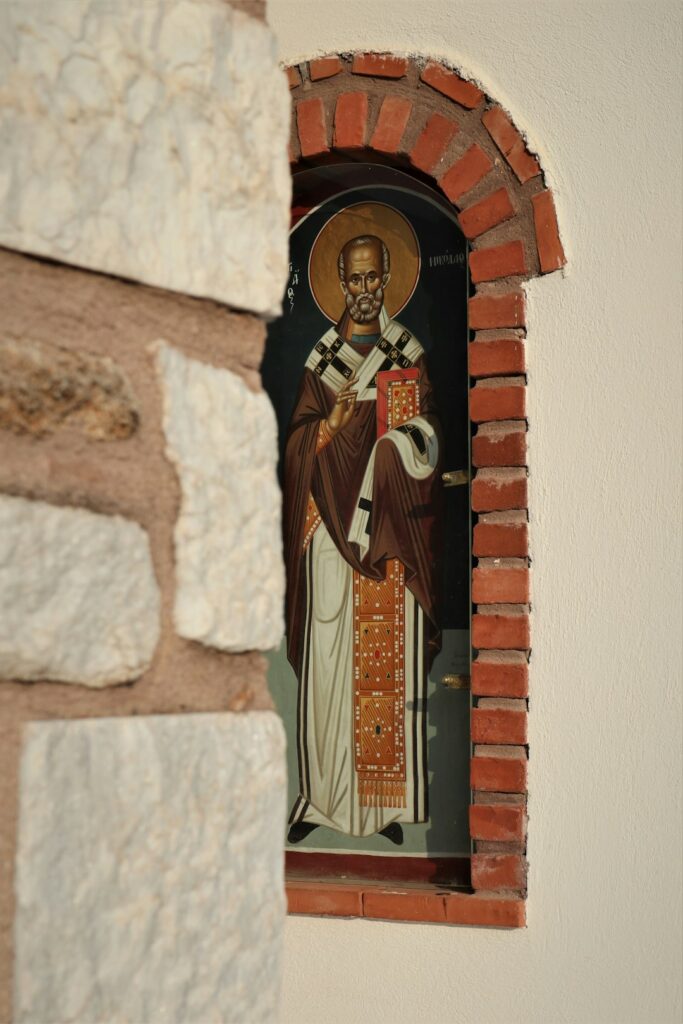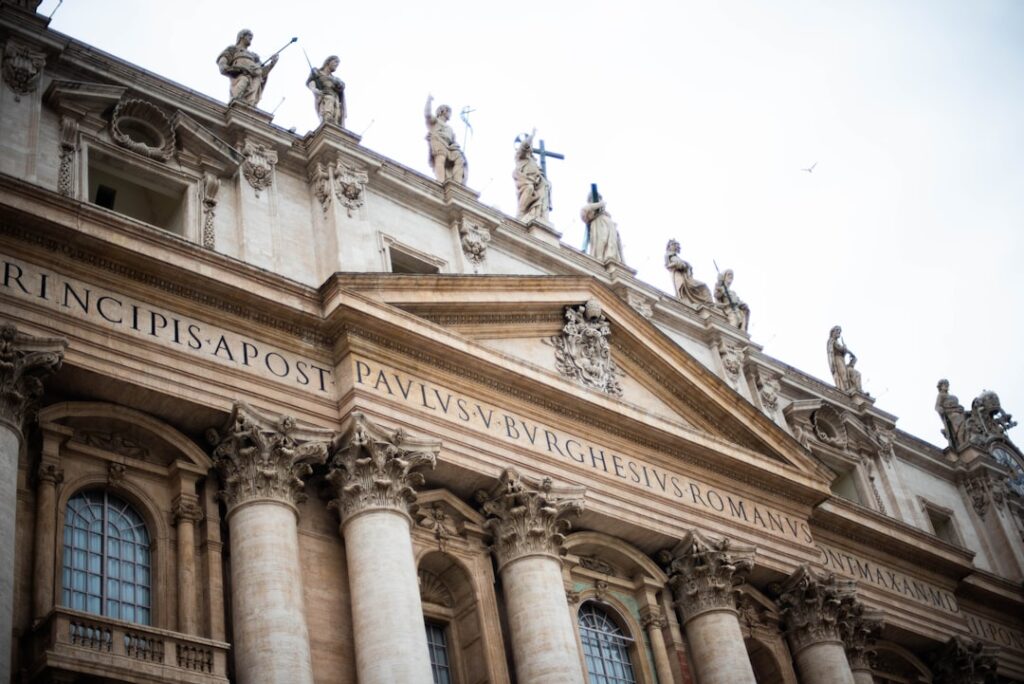Some time ago, a Protestant woman wrote to a friend of mine, mentioning her concern that the Catholic Church places her under a curse. The reason? She says she believes a number of the things that the Council of Trent anathematised. The word anathema indeed means ‘curse’. To say of someone, ‘Let him be anathema’ means ‘Let him be cursed’.
The origins of such strong language are found in the New Testament. St Paul begins his epistle to the Galatians with the forceful words: ‘Though we, or an angel from heaven, preach a gospel to you besides that which we have preached to you, let him be anathema. As we said before, so now I say again: If any one preach to you a gospel, besides that which you have received, let him be anathema’ (Gal 1:8-9). Our Lord Himself declares that a curse will be pronounced on the last day against those who failed to serve the needs of others: ‘Then he shall say to them also that shall be on his left hand: ‘Depart from me, you cursed, into everlasting fire, which was prepared for the devil and his angels’ (Mt 25:41).[1]

In our day of tolerance and mutual understanding, many people – like the woman mentioned above – have serious difficulty admitting that God would or even could pronounce a curse. It can seem incomprehensible that the Church in former ages (up to and including the First Vatican Council in 1869-1870) would call God’s curse upon people who do not share her faith. Either God and the Church are monsters, or there is something else going on here that we have lost.
A Novel Approach
It is well known that in our day, the Catholic Church rarely condemns error. At the Second Vatican Council, Pope John XXIII inaugurated this change in how the pastoral office of the Church is discharged. It was then confirmed by Pope Paul VI and his successors, for whom the role of the Church is not primarily to condemn error but rather to affirm simply what Christ taught, leaving it up to the individual to see (or not to see) its importance and relevance. This approach is based on the unproven assumption of good faith on the part of those who hear the proclamation of the faith and on the further unproven assumption that good faith is enough for salvation. This novel attitude seems to have been encapsulated in the conciliar declaration on Religious Liberty in the following sentence: ‘The truth cannot impose itself except by virtue of its own truth, as it makes its entrance into the mind at once quietly and with power’.[2]
Most otherwise good people are inclined to think this is a positive development. Cooperation between Catholics and Protestants has progressed considerably since Vatican II. So has religious dialogue with Jews, Muslims and other religions. However, while it is true that the truth cannot be imposed by force, it does not follow that the simple explanation of the truth will be convincing for all, especially if no effort is made to debunk opposing errors. Indeed, this can lead to the impression that the truth is one opinion among many. Furthermore, one must never underestimate the blindness of the intellect due to original and personal sin.
It is one thing to consider Catholicism as a religion among others, much like when you go to an exhibition and find any number of booths that have something to offer, and it is up to you to choose what you like. It is quite another for Catholicism to say to the world: ‘The one true religion revealed by God through Jesus Christ is the Catholic faith. To reject the Catholic faith is to reject Christ. To reject Christ is to reject God and salvation. Eternity is at stake’.
This latter approach, which many today would consider intolerant, was that of the apostles, and it is undoubtedly what they believed. To take just one example among many, consider these words of Paul and Barnabas to the Jews in Antioch who were rejecting their preaching: ‘To you it behoved us first to speak the word of God: but because you reject it and judge yourselves unworthy of eternal life, behold we turn to the Gentiles’ (Act 13:46). The rejection of the preaching of the apostles is equivalent to the act of rejecting the word of God, and with it, His grace; it is to refuse the means of obtaining eternal life. When Paul later wrote to the Corinthians, ‘If any man love not our Lord Jesus Christ, let him be anathema’ (1 Cor 16:22), he was not being rhetorical. He was speaking an obvious truth for whomever has read the Gospel. The love God has shown us in Christ Jesus cannot go unanswered; to refuse to answer is to fall under a curse. This is the logic that led the Church to formulate anathemas against false teaching from the time of the very first ecumenical council at Nicaea in 325.
The Easy Way Out
It would appear that not having to pronounce anathemas makes the job of ecclesiastical dignitaries easier, for it means they do not have to be as guarded in their words. Impromptu remarks have always existed, and no one would have considered in former times that a Pope is necessarily inspired when he offers them. It is a very different matter when it is a question of publishing on matters of faith. The new genre of ‘exhortation’ devised by Paul VI and abundantly used by popes after him leaves the pope free to write as if he were submitting an article to a review instead of teaching authoritatively. If he has not done his homework, or if he uses that platform to promote his own ideas instead of teaching the truth entrusted to the Church, he can certainly promote confusion, even though informed persons know that he is not expected, in that context, to proclaim the faith in a definitive way. The very genre of ‘exhortation’ does not include definitive teaching on the faith.[3]
Pronouncing anathemas, however, definitely requires serious homework. It is to engage the fulness of the Church’s teaching office. It cannot be taken lightly, nor can it be open to ambiguity. This is why, from the earliest centuries, we find rather sparse interventions of the Church’s supreme magisterium. The faith had been handed down throughout Christendom and was shared by all who professed Christ. When someone deviated from the faith and began to teach questionable doctrines that were disturbing souls, it was brought to the local bishop and, if that did not suffice to resolve the quarrel, ultimately to the Pope. His role was to approve or to condemn, and he did precisely that. In contrast to the present-day loquacious magisterium, the faith in former times was formulated concisely to preclude misunderstanding or manipulation. Error was condemned under anathema because believing a falsehood, even in good faith, can only have disastrous consequences, just as eating poisoned food will kill, even if it tastes good and one is convinced that it is perfectly healthy. Only the truth saves. Only the truth leads to God. This is why the authority spoke with such clarity, pronouncing a solemn curse (anathema sit) on heterodox opinions. The faithful then knew without a shadow of a doubt what they needed to believe and what they had to avoid. There was no confusion.

Pronouncing anathemas also had another essential effect: It made it clear that not everything is good and not everyone is to be trusted. If no one is anathema, then all people are good. If no doctrine is anathema, there is no longer any difference between truth and falsehood, between good and evil. Then befalls what the prophet Isaiah had already warned of: ‘Woe to you that call evil good, and good evil: that put darkness for light, and light for darkness: that put bitter for sweet, and sweet for bitter’ (Isaiah 5:20). When nothing is anathema, religious truth is lowered to the level of opinions that you can take or leave, and that at the end of the day do not really matter. ‘You have your truth, I have mine.’ Gradually, even the Church no longer knows where she stands.
Having recourse to anathema, far from being contrary to charity, is actually one of charity’s most visible fruits. If ‘it is an outstanding manifestation of charity toward souls to omit nothing from the saving doctrine of Christ’[4], then to make crystal clear what exactly we are to believe and what exactly is opposed to our faith and our moral life, and to do so in such a way that no room is left for doubt, this must be an eminent demonstration of pastoral charity.
An Experiment That Must End
What, then, are we to say of the new orientation of the Church since roughly 1960? Has it been a mistake? Has it been futile? A mistake, yes. Futile, perhaps not entirely. It is certainly good for the Church to show interest in all peoples and their beliefs. After all, she is sent to them all to be their teacher, and a good teacher approves what is good while rejecting what is erroneous. For this reason, Catholic missionaries always set about to learn the beliefs of the peoples they were sent to, in order to approve what was good and reject what was not. It may well be said by future generations that what we might call ‘the policy of the outstretched hand’ gave those in error a chance to embrace truth; it gave those separated from the order of truth the opportunity to embrace it while saving face. And some did. The Church will be able to say she has made every attempt to befriend those in error to enlighten them with the saving truth. The crux of the problem is, sadly, that most Church leaders understood and continue to understand the outstretched hand as implying that we must no longer stress the importance of conversion to the truth and, above all, that we must no longer condemn error. It is this part of the experiment that must end.
The reason is simple. The human intellect needs clarity. Let’s have recourse to an analogy. In modern times, driving a car is a common experience. It is also an extremely dangerous one. It is so easy to kill people while driving that a very concise code has been devised, which includes rules specifying what one may and may not do while in the driver’s seat. There are not only green lights to say ‘go’, but also red lights to say ‘stop’; there are also give way signs that alert us to oncoming traffic to which we must yield; the road itself is delineated in such a way as to show not only the direction to drive in but also the limits beyond which one is no longer on the road or in the proper lane and therefore in grave danger. To ignore the rules is to put lives in jeopardy. So it is in our journey towards eternal life. It is essential that people be able to know without error, and even without the possibility of error, what is the good way to reach the goal without danger. There must be signs that we can read and that we can trust. ‘Thy ears shall hear the word of one admonishing thee behind thy back: this is the way, walk ye in it: and go not aside neither to the right hand, nor to the left’ (Is 30:21).

Whatever the future may hold, we can expect that anathema will make a comeback. There are actually a number of indications that it may not be far away. In recent years, some bishops have come close to pronouncing it again. It is true that those who hold authority must indeed be careful not to abuse it. But it is equally true that to fail to use it is to misuse it. It is high time we heard clear condemnations of error and vice from those in authority.
The true Church of Christ is not content to declare such and such a teaching to be contrary to her own. Anyone can do that. No, she is the divinely appointed teacher of nations, and it belongs to her to not only illustrate the truths of the faith in a positive way, but also to pronounce anathema against all that is contrary to the faith that has been revealed to the world, and against all moral deviations from God’s law. Otherwise, in the eyes of men, the Church becomes just another institution among others that people might choose for reasons of personal preference, just another booth in the modern pantheon.
Anathema will return precisely when the Church as a whole recovers deeper faith in the truth that has been revealed to us and more ardent love for the Saviour who died for us. Then, moved with shame for the way we have allowed the Bride of Christ, the Church, to be stripped of her royal robes, naked and mocked by the world, our shepherds will once again take up in their hands the double-edged sword of truth (cf. Heb 4:11). On that day, God will arise, and His enemies will scatter (cf. Psalm 67).
[1] Though word for cursed in this verse is not anathema but kateramenoi, the meaning is the same: a curse is pronounced.
[2] Second Vatican Council, Declaration Dignitatis Humanae, 1.
[3] This, in passing, is the reason for which, when Paul VI gave the definitive Church teaching on contraception, he did not do so under the form of an exhortation, but rather of an encyclical (Humanae vitae). John Paul II followed suit when he definitively rejected the possibility of women priests in the apostolic letter Ordinatio Sacerdotalis.
[4] Paul VI, Humanae Vitae, 29.

